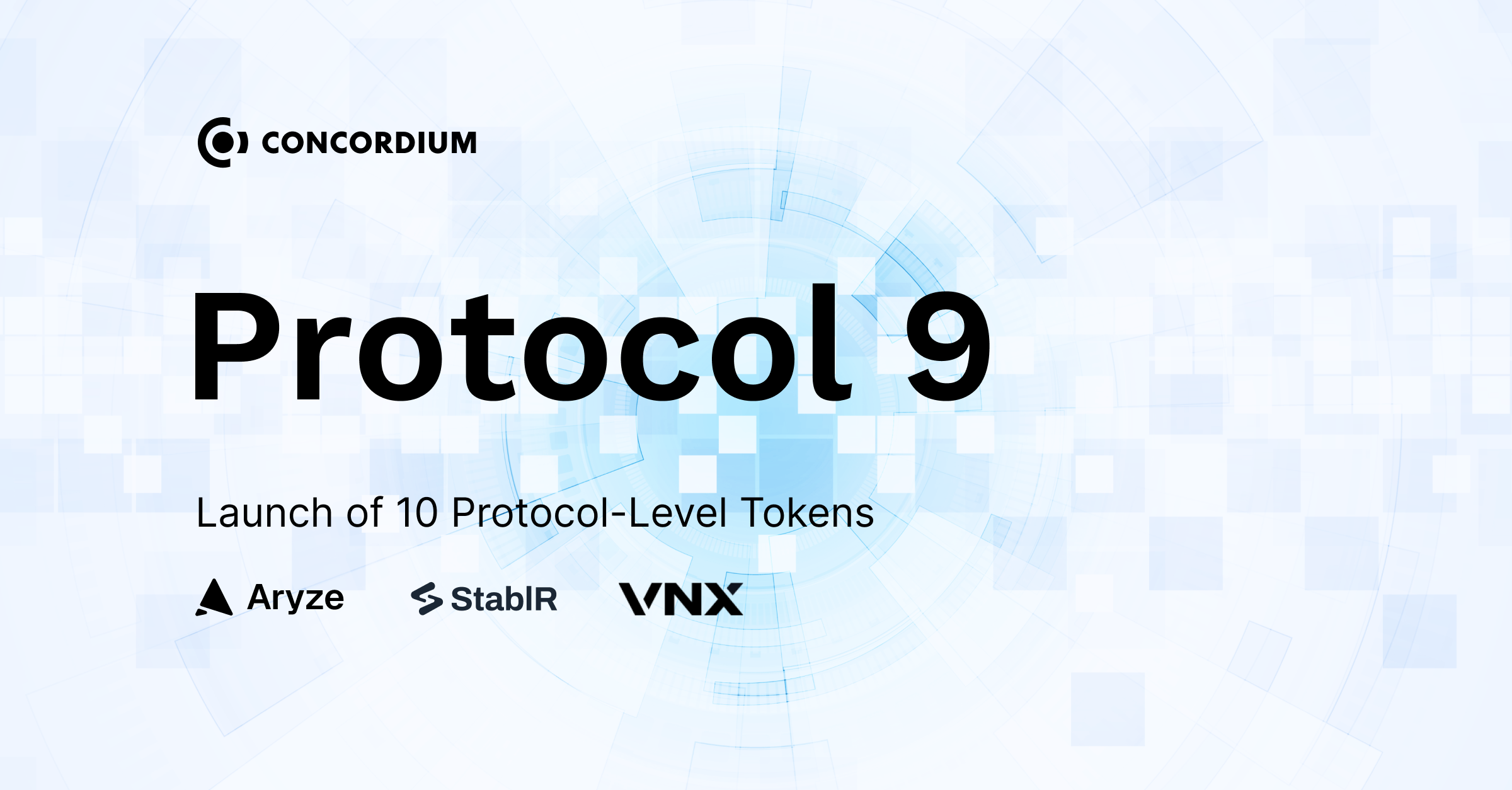10 New Stablecoins, 5 Currencies: The Explosive Growth of the Concordium Mainnet

By enabling 10 new stablecoins across five currencies, Concordium demonstrates how Protocol-Level Tokens can anchor the next phase of global, auditable digital finance.
The launch of 10 stablecoins as Protocol-Level Tokens (PLTs), issued by three trusted partners, and covering five global currencies was made possible by our latest Protocol 9 (P9) update. This not only forms a strong backbone for PayFi, it signals a demand for any institutional-grade, Smart Money financial ecosystem.
PLTs are blockchain-native assets built directly into the Concordium protocol, enabling secure, efficient, and compliance-aware issuance, transfer, and management of tokens without relying on custom smart contracts.
They are a significant step in realizing Concordium’s payment rails for the future of finance vision, as they lay the groundwork for compliance-ready stablecoins and seamless programmable payment flows built directly into the chain.
What the P9 Update Delivers
The P9 protocol upgrade introduces the pilot functionality of PLTs with the following features:
- Due Diligence Process: Issuers are selected based on regulatory strength, market reach, and liquidity to boost the utility of PLTs across real-world use-cases.
- Issuer Control: Designated token owners can mint and burn supply.
- Whitelist/denylist Management: Using Concordium ID, issuers can enforce geofencing and regulatory compliance.
- Native Transfers: PLTs can be sent seamlessly between accounts, with or without memos, supported across wallets, explorers, and tooling.
This foundation enables stablecoin issuance at the protocol layer, and sets the stage for Smart Money features such as locks, scheduled releases, and smart contract interactions.
Protocol Level Tokens: The Future of PayFi
PLTs are tokens deployed directly into Concordium’s protocol, not deployed as smart contracts. This fundamental difference sets them apart from ERC-20 or other contract-based tokens, which rely on custom code that must be written, deployed, and audited for each issuer, as each line of code carries the risk of bugs or exploits. Launching stablecoins on Ethereum, for example, isn’t optimal for security, as ERC-20 contracts rely on mint and burn logic where auditability often introduces more complexity than solutions. On Concordium, the same issuer can create a PLT directly at the protocol level, with minting, burning, ID verification, and allow/deny listing already built in. PLT issuance also goes through a vetting process to ensure that only bonafide issuers control tokens.
Critically, PLT assets are never held in smart contracts, meaning token balances are maintained at the protocol level and safeguarded by Concordium’s core rules rather than fragile contract code. This reduces one of the biggest risks in other ecosystems, where billions have been lost to vulnerabilities in token contracts.
By embedding tokens directly into the chain, Concordium delivers efficiency needed for high-volume transfers, while making ID verification a built-in feature rather than an afterthought. This blend of simplicity, security and speed allows PLTs to fuel PayFi, moving Concordium’s vision of frictionless, verifiable and programmable payments from concept to reality.
From Testnet to Mainnet in A Jiffy
The journey of PLTs has been one of remarkable progress. What began on Devnet as an experimental feature refined by developers and issuers has now matured into a live protocol-level token system in under six months! In this record time, Concordium has advanced from proof of concept to real adoption, an achievement few blockchains can claim at this pace.
Along with the P9 update, three trusted issuers are bringing 10 stablecoins as PLTs across five currencies to mainnet. This is a milestone that cannot be overstated: launching even a single stablecoin requires issuers to navigate regulatory approvals, licences, and compliance frameworks, not to mention securing liquidity and on-ramping commitments – these are definitely not memecoins! Three issuers out of 10 going live simultaneously is a powerful testament to the robustness of PLTs and Concordium’s ability to support real-world finance.
StablR leads with its stablecoins (EURR & USDR) ready for integration on notable exchanges, while Aryze (eGBP, eEUR, eUSD, eSGD), and VNX (VEUR, VCHF, VGBP) prepare to expand coverage and liquidity in the coming months. The remaining issuers will continue to build towards transitioning from testnet to mainnet. This is by far more than just a technical achievement. This new generation of PLTs signal the beginning of a thriving, multi-asset PayFi economy where compliance-readiness is not just an afterthought, but a protocol-level guarantee.
The Next Step in Smart Money
With PLTs live on mainnet, the path to Verify & Pay—one-click, ZKP-powered transactions that are global, regulation-ready, auditable, and instant—has begun. Built-in features like allowlists, denylists, geofencing, and age-gating are enforced at the protocol level circumventing the vulnerabilities of smart contracts. Merchants and users can skip complex, multi-app ID checks and payments, moving instead to a single flow through Concordium Pay for customers and Verify & Pay for merchants.
With the foundation laid, and the liquidity phase underway, PayFi is unleashed.This demonstrates Concordium’s potential to become a trusted home of stablecoins – a natural destination for issuers and institutions alike looking for operational simplicity, verifiability with accountability, and compliance-first infrastructure. Stay tuned as Concordium continues to roll out more advanced features from the roadmap.
